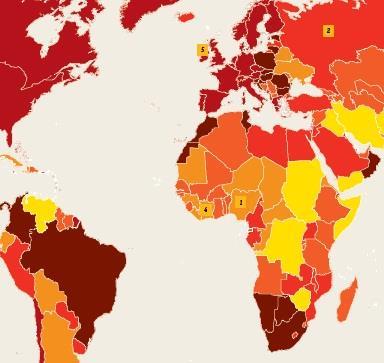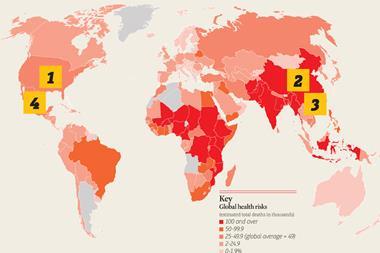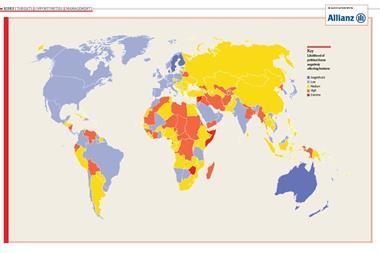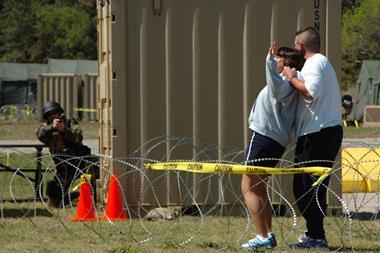Acts of terrorism are impossible to predict, especially at the hands of lone terrorists

The problem with terrorism risk maps is that they are only as good as the intelligence behind them. Terrorists that slip though the intelligence net are unlikely to have been identified already (one of the reasons why they are able to succeed). It’s therefore difficult to predict their targets.
A terror risk map is still useful, though, if nothing more than to give a snapshot of the perceived threat level across the globe, allowing insurers to assess risk and therefore price their products.
Aon’s terrorism risk map, which is illustrated here, ranked the risk of a terrorist attack in Norway as ‘negligible’ when it was first published in June this year. But long before Anders Behring Breivik killed 77 Norwegians in July the Nordic countries had been identified as a possible terrorist target. It was the threat from Islamic extremists that was seen as most pressing – particularly with Norwegian soldiers serving in Afghanistan.
But the threat from lone terrorists such as Breivik appears to be eclipsing the risks posed by groups of extremists such as al-Qaeda. One reason for that could be because lone terrorists are harder to spot, as they don’t work with others. On the other hand, the smaller the conspiracy, the less chance that it will be thwarted by intelligence.
There is a four in five probability that a conspiracy involving five or more operatives will be interdicted by the intelligence services
Gordon Woo, chief architect of the RMS Terrorism Risk Model
Western security services have been fairly successful at curbing al-Qaeda and its affiliates because they have been able to infiltrate the extremist groups using agents or informers, and because of the international nature of the Muslim diaspora, a lot of the communication between Islamic extremists is done over the internet, making it easier to spot.
US authorities have had considerable success tackling al-Qaeda and preventing an attack on US soil since the Twin Towers in 2001. In fact, the largest single terrorist attack in the USA since 9/11 was committed by a single man, Major Malik Nadal Hasan, at a military base (Fort Hood). It serves as a reminder of the dangers posed by individuals who become radicalised by extremist ideology, which fuels acts of extreme violence.













No comments yet